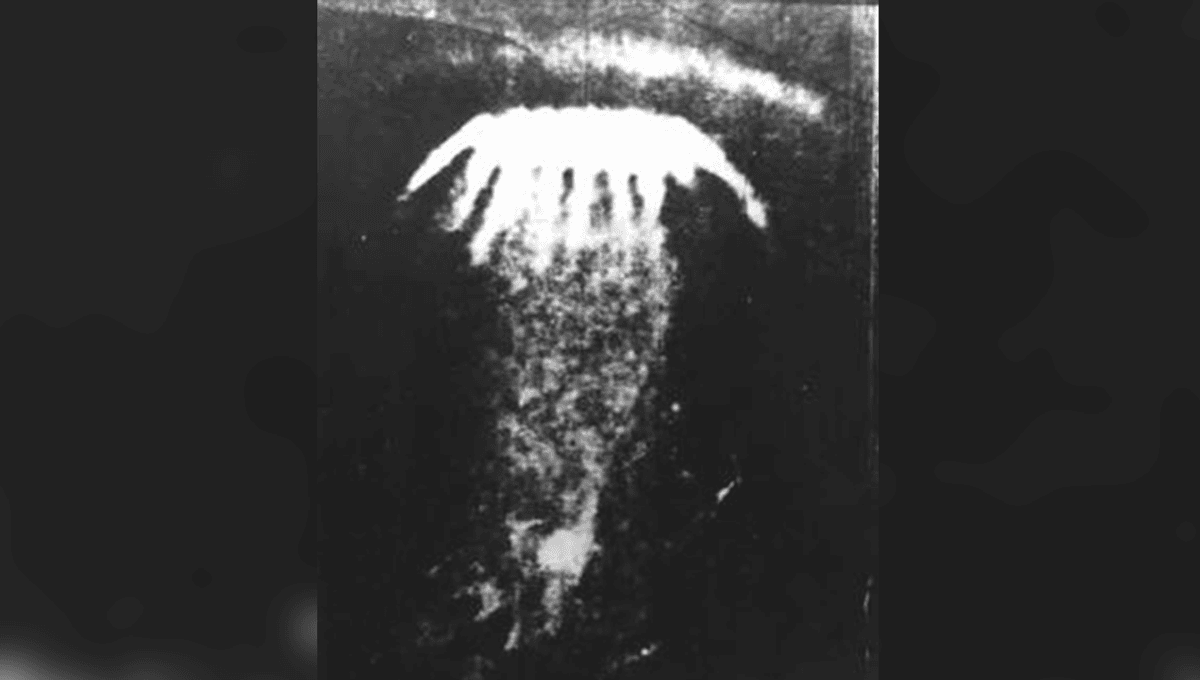
On September 20, 1977, citizens of northern Europe and Soviet Russia were greeted with an unusual sight in the night sky.
Early that morning witnesses in Petrozavodsk, but also as far away as Copenhagen and Helsinki, saw a large glowing light which “hovered over the city in the form of a jellyfish sending down a multitude of fine beams,” then Soviet media agency Tass reported at the time, per the New York Times archives.
“The impression was of a torrential rain of light. Some time later the glow ended,” they added. “The ‘jellyfish’ became a bright semicircle and resumed its movement in the direction of Lake Onega.”
Following the show, gray clouds appeared with a red glow in the middle, with the whole phenomenon lasting around 10-12 minutes from start to finish.
“At the end of the second phase, an intense glow was observed at the horizon, which continued until dawn,” a translation of a Soviet report into the phenomenon explains. “During this phase of the phenomenon, the appearance of luminous objects was also noted at several points.”
One object seen by many witnesses was, according to the report, a bright glowing orb.
“At 3:50 Moscow time (5:50 local time), a luminous ball comparable in size to the Moon was observed, slowly moving from west to east, leaving behind an orange trail similar to the contrail of an airplane. The edges of the ball seemed blurred; the front hemisphere, together with the surrounding air, formed a clearly visible arc, continuing from the ball along tangent lines. The ball flickered and emitted rays in all directions. There were no flickering rays ahead of the arc,” the report states, citing witness reports.
“Apparently, the balloon’s flight took place in the lower layers of the atmosphere, since its trail was observed against the background of clouds.”
While several radar stations did not pick up the objects – if they were objects – the report notes that two unusual objects were seen approximately 16 kilometers (9.9 miles) from Petrozavodsk, at the same time a witness observed another glowing orb.
That report concluded that it was not possible to figure out what the cause of the phenomenon was, though they seemed happy with witness reports and could rule out potential causes such as bolides due to a lack of associated noise.
Unfortunately, we aren’t any closer to the truth of the situation years later. Suggestions have included satellite launches and auroras. One obvious possibility, denied by the Soviet Union at the time, was that the phenomenon was the result of a rocket or weapon test. This is certainly feasible.
“Several additional effects that attended the Petrozavodsk phenomenon were due to the unsuccessful test launch of a ballistic missile conducted in the same region at practically the same time,” one review of UFOs in the Soviet Union explains.
Whether a military test gone awry or not, the incident led to the Soviet Union creating an investigation into UFO phenomena, giving budget to “Studies of Anomalous Atmospheric and Space Phenomena, Their Causes, and Their Effects on the Performance of Military Hardware and the Status of Personnel”.
Unless a similar phenomenon is seen and studied, it is likely that we will never have a definitive explanation for its cause. Though a satellite launch or a military test seems far more likely than an alien civilization traveling across the cosmos, visiting briefly, and never returning to say “howdy”.
Source Link: The Petrozavodsk Phenomenon: A Celestial Mystery Seen Over 1977 Soviet Russia